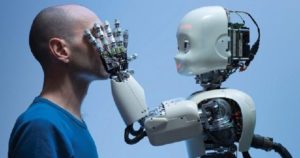“Star Wars: The Last Jedi” premiered and its main character Rey seeks to learn the ways of the Force from Luke Skywalker, it raises some questions:
What resembles the Force? Can objects be manipulated instantly from a distance?
“These aren’t the forces that you are looking for”
Obi-Wan Kenobi told Luke Skywalker in the strange Star Wars film that the Force “surrounds us and penetrates us; it binds the universe together.”
Modern physicists know that there are actually 4 elemental forces: the two nuclear forces, the electromagnetic force, and the gravitational force. All of these play a role in contracting matter together, from the minute of atoms to the largest of planets.
However, these are substantially not the forces we are looking for. Old Ben Kenobi, Yoda, and, eventually, Luke, could communicate telepathically over the distances and move objects with their minds.
Are these feats possible? What do the laws of production contend about this?
“I find your lack of faith disturbing”
Einstein’s theory of relativity put some strict limits on how fast we can communicate — the ultimate speed limit is the speed of light.
So, if you needed to send a message to Alderaan to warn the citizens of an Imperial attack, there would always be a delay. Even if you wanted to, you couldn’t warn them in time to evacuate because it takes time for light to travel to transmit the message.
Ben Kenobi couldn’t possibly have felt a disturbance in the Force only a few instants after the Death Star destroyed Alderaan. Or could he?
“It’s true, all of it”
What does quantum physics say about information transferred over large distances? Unfortunately, we cannot break Einstein’s speed limit, even if we had the Millennium Falcon.
However, through a trick of quantum mechanics, you can link two particles in a special way, separate them, and then observe the effects of one upon the other over large distances. This is known as quantum entanglement — placing two objects in the same entangled quantum state. And it is weirder than anything that Star Wars creator George Lucas could come up with (Jar Jar Binks excluded, of course).
It can be demonstrated in the lab with particles of light. When these two particles, or photons, are separated over large distances, they are still correlated with each other. If you measure one particle, the other particle’s state will be determined immediately no matter how far it is away. Einstein didn’t like this idea, since it was “spooky action at a distance.” However, modern physics experiments have shown that entanglement is real — particles can be connected over large distances.
As Han Solo would say: “It’s true. All of it.”
In fact, George Lucas was influenced by quantum theory when he was writing the original script for Star Wars. In the late 1960s and early 1970s, New Age thinkers proposed that quantum entanglement is a “force” that really does bind us all together.
It is well known in physics experiments that the observer can become entangled with the object that they are measuring, changing the measurement.
The Force may actually be with you
The forces we experience on Earth may not operate like the powerful, people-projecting, weapon-deflecting one in “Star Wars” — but force fields do happen here.
But channeling enough force to project a hologram to a distant battle is, of course, unrealistic.
Still, some force fields on Earth are nearly as mysterious as those in the movies.
A report in The New York Times about the US government’s efforts to investigate potential UFO sightings described an incident in which pilots saw something bizarre on their screens in flight.
“They’re seeing an object that seems to have a force field — as they describe it — around it, that’s hovering before it suddenly disappears out of the sky as soon as they think they’re getting a radar lock on it,” Times Reporter Helene Cooper said on The Daily podcast.
References:
http://www.businessinsider.com/science-of-star-wars-the-last-jedi-is-sound-2017-12?IR=T/#the-force-may-actually-be-with-you-3










